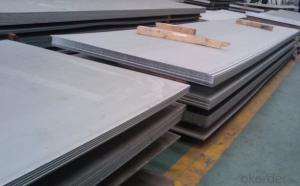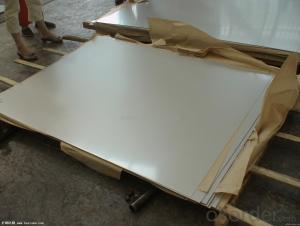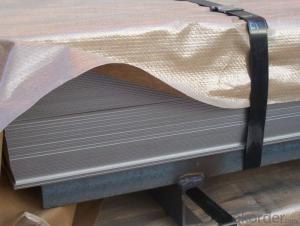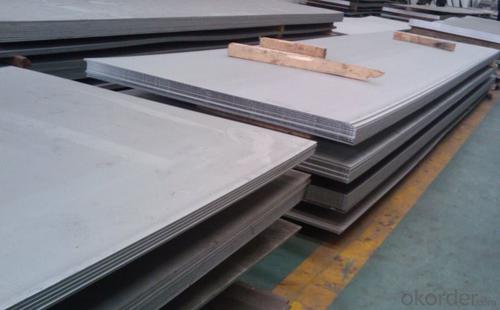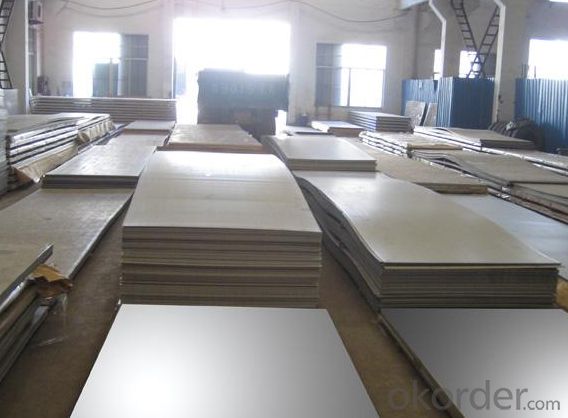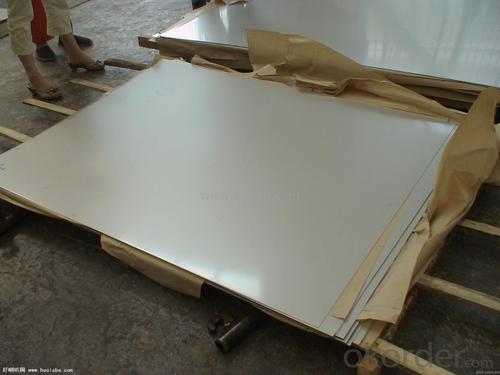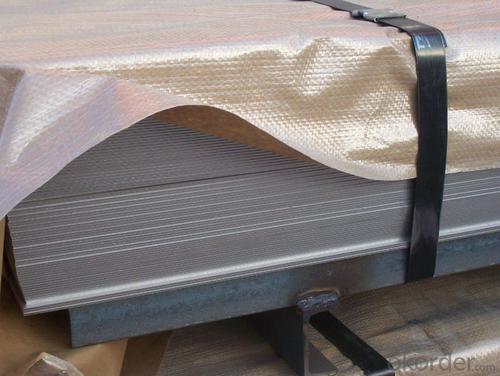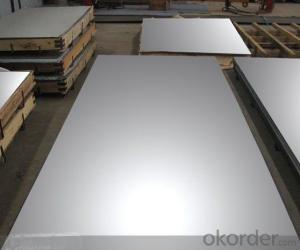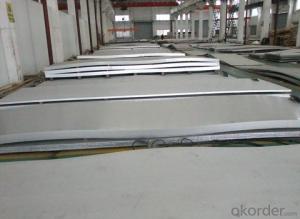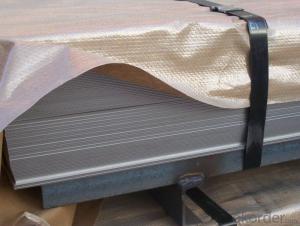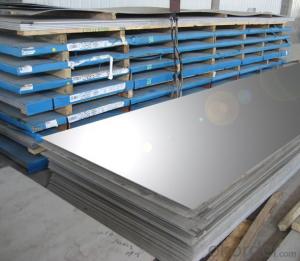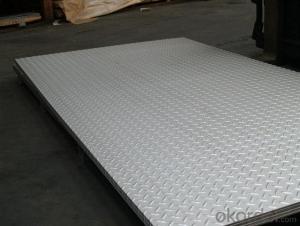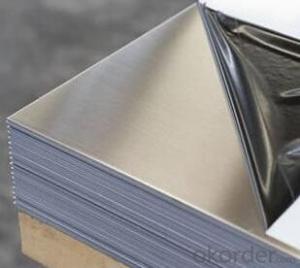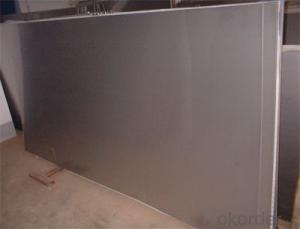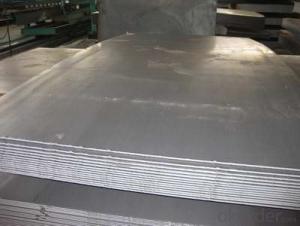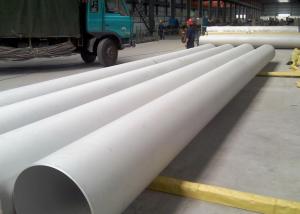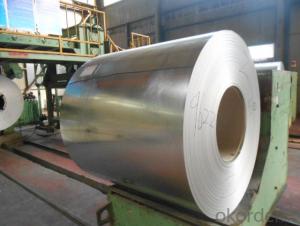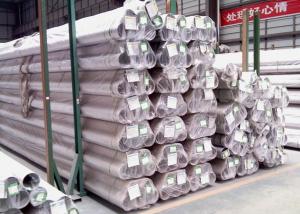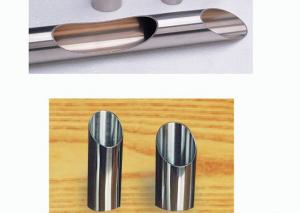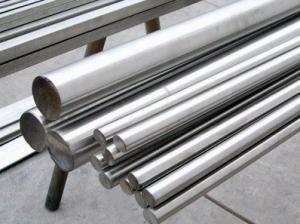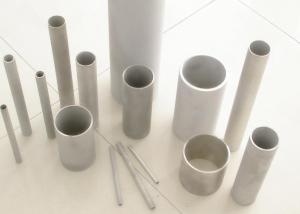Stainless Steel Plate 430 with Low Moq in #4 Polish Treatment
- Loading Port:
- Shanghai
- Payment Terms:
- TT OR LC
- Min Order Qty:
- 10000 m.t.
- Supply Capability:
- 5000000 m.t./month
OKorder Service Pledge
OKorder Financial Service
You Might Also Like
Hot sale stainless steel sheet 201/202/304/304l/316/316l/430
Description of Stainless Steel Sheet:
Description | steel sheet,hot rolled steel sheet,cold rolled steel sheet, steel sheet,sheet,steel plate |
Standard | ASME, ASTM, EN ,BS,GB,DIN, JIS etc |
Application | Steel sheet applies to construction field, ships building industry, petroleum & chemical industries, war and electricity industries, food processing and medical industry, boiler heat exchanger, machinery and hardware fields. |
Packaging | Standard export sea-worthy packing |
Delivery time | 10-30 days |
Quality | No.1 |
Productivity | 500 tons/Day |
Note | Our company has cooperative relation between the domestic agents. Stainless steel sheet can be made accordingto the customers requirements. Fasten delivery. Quality assured. |
Contacts | If you have any question,please feel free contact me. |
Stainless steel sheet surface finish characteristics
Surface finish | Characteristics and application |
2B | The surface brightness and flatness of no2B is better than no2D. then through a special surface treatment to improve its mechanical properties,No2B could nearly satisfy comprehensive uses. |
No.1 | Polished with abrasive belt of grit#100-#200, have better brightness with discontinuous coarse stria, used as inner and external ornaments for building, electrical appliances and kitchen utensils etc. |
No.4 | Polished with abrasive belt of grit #150-#180,have better brightness with discontinuous coarse stria, but thinner than No3, are used as bathtub buildings inner and external ornaments electrical appliances kitchen utensils and food processing equipment etc. |
HL | Polished with abrasive belt of grit #150-#320 on the NO.4 finish and has continuous streaks, mainly used as buildings ornaments elevators, door of building, frontal plate etc. |
BA | Cold rolled, bright annealed and skin-passed, the product have excellent brightness and good reflexivity like mirror, kitchen apparatus, ornament etc. |
8K | The product have excellent brightness and prefer reflexivity can to be the mirror. |
Main Features of stainless steel sheet :
•Escalator, Elevator, Doors
•Furniture
•Production tools, Kitchen appliances, freezers, cold rooms
•Auto Parts
•Machinery and Packaging
•Equipment and Medical devices
•Transport system
Product Details:
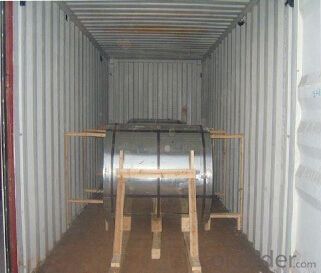
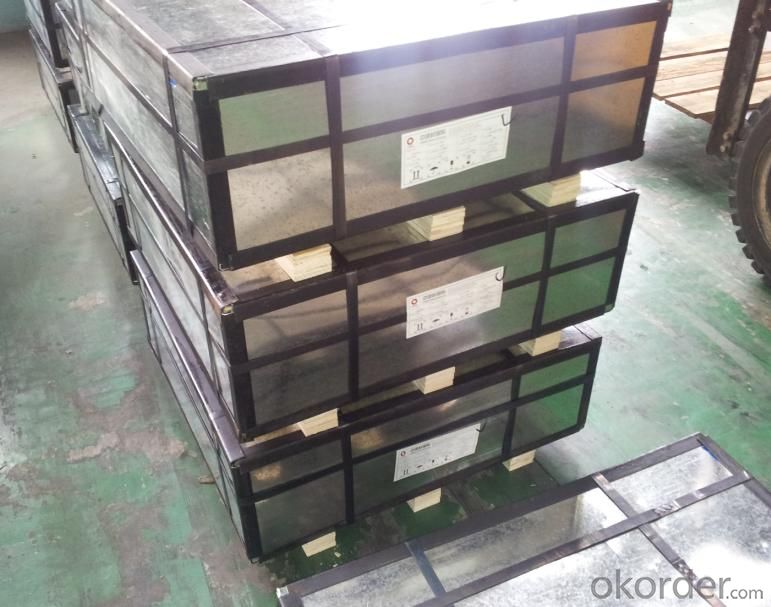
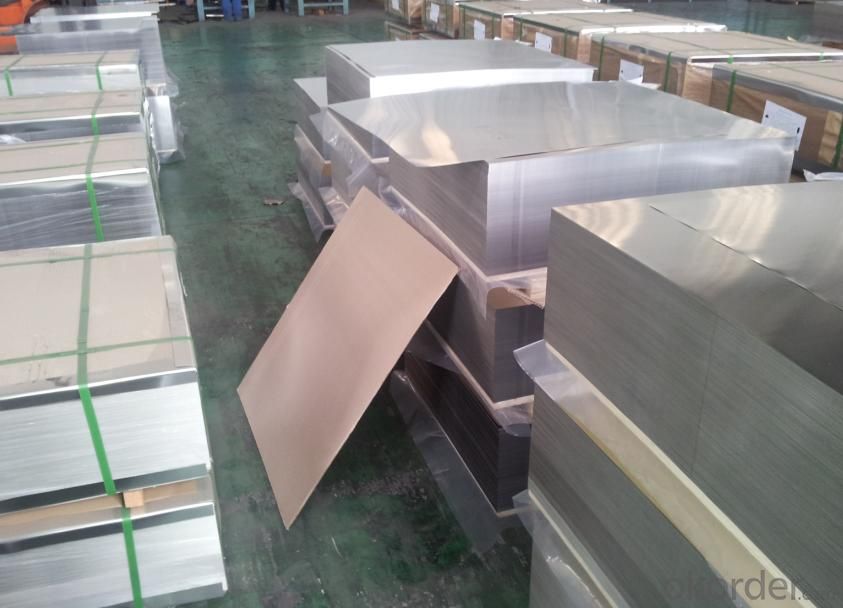
Sandard Seaworth Packing(wooden packing with water proof paper)
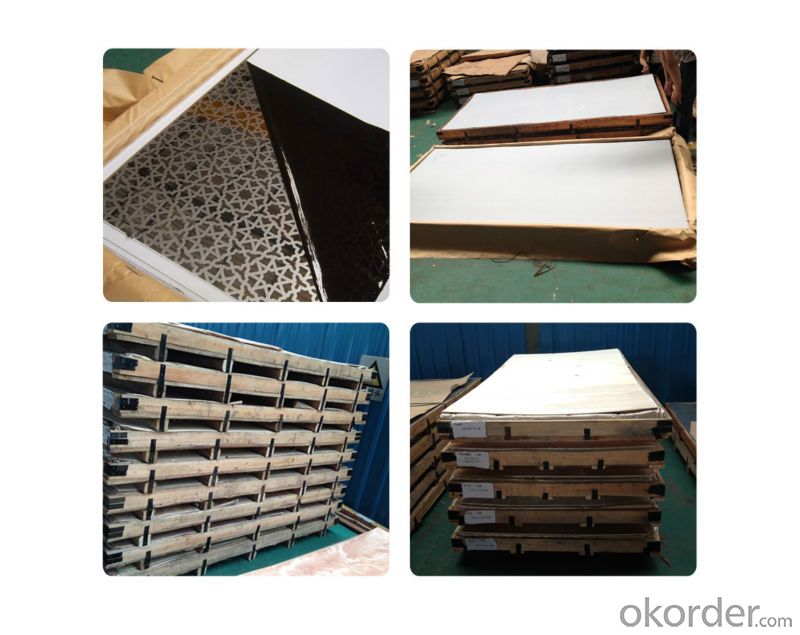
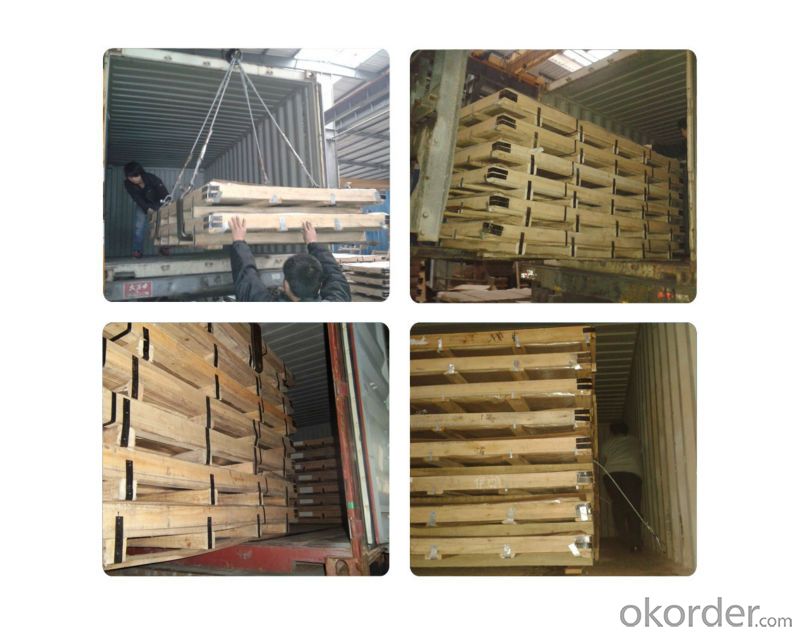
FAQ:
What are we supplying now?
We are specialized in producing stainless steel coil, stainless steel (plate/sheet), and duplex stainless steel for a
prelonged period. We are currently doing grade of steel of 201/202,304/304L, 310S/309S/316L/316Ti/321,410/4
20/430/444/443/409L, and 904L
2. How Many years experience do we have?
We have been exported to more than 20 countries in the past 15 years.
3. How long do we usually reply your request?
We always reply our customer within 24 hours.
If you have any question about stainless steel sheets,donot forget to sending the email to Us! You will get the competitive Price and have a very good experience about the Buying Process! CNBM International Corporation is always your trustful friend!
- Q: Are stainless steel sheets suitable for architectural applications?
- Architectural applications greatly benefit from the suitability of stainless steel sheets. This material, known for its versatility and durability, offers numerous advantages for architectural projects. Its exceptional corrosion resistance makes it an ideal choice for outdoor applications exposed to harsh weather conditions. Additionally, stainless steel is easily cleaned and maintained, ensuring a visually appealing and long-lasting finish. Not only does stainless steel provide functional benefits, but it also enhances the architectural design with its aesthetic appeal. Its sleek and modern appearance can complement a variety of styles, ranging from contemporary to industrial. Architects have ample design flexibility as stainless steel can be fabricated into different shapes and sizes. Moreover, stainless steel sheets find extensive use in various architectural applications. They are commonly employed in cladding, roofing, and façade systems, adding a distinct and eye-catching element to buildings. Furthermore, stainless steel can be incorporated into interior design elements such as wall panels, handrails, and decorative finishes, creating a sophisticated and luxurious atmosphere. Overall, stainless steel's exceptional properties, combined with its aesthetic appeal and versatility, make it an excellent choice for architectural applications. Its durability, corrosion resistance, and ease of maintenance make stainless steel sheets a reliable and long-lasting option for architects and designers.
- Q: What is the elongation of stainless steel sheets?
- The elongation of stainless steel sheets refers to the ability of the material to stretch or deform under tension before breaking. It is typically expressed as a percentage and represents the maximum strain the steel can undergo without fracturing.
- Q: What are stainless steel sheets made of?
- Stainless steel sheets are made from a type of steel alloy that contains a minimum of 10.5% chromium. The addition of chromium creates a protective layer on the surface of the steel called a passive film, which makes stainless steel resistant to corrosion and staining. In addition to chromium, stainless steel sheets may also contain other elements such as nickel, molybdenum, and nitrogen, which enhance its mechanical properties and corrosion resistance. The specific composition of stainless steel sheets can vary depending on the desired properties and applications.
- Q: Are stainless steel sheets suitable for decorative applications?
- Indeed, decorative applications can benefit from the use of stainless steel sheets. With its versatility and ability to provide durability and aesthetic appeal, stainless steel proves to be an excellent choice for a variety of decorative purposes. It is widely utilized in interior design, architecture, and furniture manufacturing due to its sleek and contemporary appearance. The malleability of stainless steel sheets allows for shaping, cutting, and fabrication into numerous patterns, textures, and finishes, offering endless design possibilities. Whether it be for wall cladding, backsplashes, countertops, or decorative accents, stainless steel sheets have the ability to enhance the visual allure of any space. Furthermore, stainless steel's resistance to corrosion, staining, and heat ensures its enduring beauty even in challenging environments.
- Q: What are the bending limits of stainless steel sheets?
- The bending limits of stainless steel sheets depend on several factors such as the grade of stainless steel, thickness of the sheet, and the specific type of bending process being used. Stainless steel sheets are known for their excellent strength and durability, which allows them to be bent to a certain extent without breaking or cracking. In general, stainless steel sheets can be bent to a radius that is at least twice the thickness of the sheet. For example, if the sheet is 1mm thick, it can typically be bent to a minimum radius of 2mm. However, it is important to note that this is just a general guideline and the actual bending limits may vary depending on the specific grade of stainless steel. Certain grades of stainless steel, such as 304 and 316, have higher yield strengths and are more resistant to deformation, making them suitable for more severe bending applications. Thicker sheets also have higher bending limits compared to thinner ones, as they have more material to withstand the bending forces. It is also worth mentioning that the type of bending process used can affect the bending limits of stainless steel sheets. Processes like press brake bending and roll bending are commonly used for bending stainless steel sheets. These processes utilize different techniques and equipment, which can result in varying bending limits. To determine the exact bending limits for a specific grade and thickness of stainless steel sheet, it is best to consult the manufacturer's specifications or seek guidance from a professional metal fabricator. They can provide accurate information and guidance on the bending capabilities of stainless steel sheets for your specific application.
- Q: Are stainless steel sheets suitable for elevator doors?
- Yes, stainless steel sheets are suitable for elevator doors. Stainless steel is a popular choice for elevator doors due to its durability, corrosion resistance, and aesthetic appeal. Elevator doors are subject to constant use and exposure to various elements, making stainless steel an ideal material as it does not rust or corrode easily. Additionally, stainless steel sheets can be easily maintained and cleaned, ensuring a long-lasting and visually pleasing appearance. The versatility of stainless steel also allows for customization in terms of finishes, textures, and patterns, allowing elevator doors to be designed to match the desired aesthetic of the building or space. Overall, stainless steel sheets are a reliable and suitable choice for elevator doors.
- Q: Can stainless steel sheets be used for stairs and railings?
- Yes, stainless steel sheets can be used for stairs and railings. Stainless steel is a versatile and durable material that is often used in architectural and interior design applications. It is resistant to corrosion, which makes it suitable for outdoor use and areas with high humidity or exposure to chemicals. Stainless steel sheets can be fabricated into various shapes and sizes, making them ideal for constructing stairs and railings with a sleek and modern look. Additionally, stainless steel is easy to clean and maintain, making it a practical choice for areas with high traffic or public spaces.
- Q: How do you drill holes in stainless steel sheets?
- Drilling holes in stainless steel sheets requires some specific steps and tools to ensure accurate and clean results. Here's a step-by-step guide on how to drill holes in stainless steel sheets: 1. Gather the necessary tools: You will need a drill machine, suitable drill bits for stainless steel (preferably cobalt or carbide), center punch, safety goggles, work gloves, and a clamp or vise to secure the stainless steel sheet. 2. Choose the right drill bit: Stainless steel is a tough material, so regular drill bits may not be effective. Cobalt or carbide drill bits are more appropriate for stainless steel as they are specifically designed to cut through hard metals. 3. Mark the hole position: Use a center punch to create a small indentation at the exact spot where you want to drill the hole. This will prevent the drill bit from slipping while starting the hole. 4. Secure the stainless steel sheet: Clamp or secure the stainless steel sheet firmly to a workbench or surface to avoid movement during drilling. This will ensure accurate and clean holes. 5. Wear safety gear: Put on safety goggles and work gloves to protect your eyes and hands from metal debris and sharp edges. 6. Start drilling: Place the drill bit on the marked indentation and apply light pressure to start the hole. Use a slower speed setting on your drill machine to prevent overheating. Gradually increase the pressure as you continue drilling. 7. Use cutting fluid or lubricant: To reduce friction and heat buildup, apply a cutting fluid or lubricant on the drill bit while drilling. This will help prolong the life of the drill bit and prevent the stainless steel sheet from discoloration or warping due to excessive heat. 8. Monitor the drilling progress: Keep an eye on the drilling progress and adjust the speed and pressure accordingly. It's essential to maintain a steady pace and avoid applying excessive force, as it can lead to drill bit breakage or damage to the stainless steel sheet. 9. Remove metal debris: Periodically stop drilling and remove metal debris from the hole to prevent clogging and ensure a clean hole. 10. Finish the hole: Once the desired hole size is achieved, slowly withdraw the drill bit from the stainless steel sheet. Smooth out any rough edges around the hole using a file or deburring tool. By following these steps and using appropriate tools, you can successfully drill holes in stainless steel sheets with precision and efficiency. Remember to take your time, prioritize safety, and maintain proper tool maintenance for optimal results.
- Q: What is the strength of stainless steel sheets?
- The strength of stainless steel sheets can be attributed to several factors. Firstly, stainless steel is an alloy of iron and chromium, which provides it with excellent corrosion resistance. This resistance to corrosion makes stainless steel sheets ideal for various applications, including in environments where they may be exposed to moisture, chemicals, or extreme temperatures. In addition to corrosion resistance, stainless steel sheets also possess high tensile strength. Tensile strength refers to the maximum amount of tensile stress a material can withstand before failure. Stainless steel sheets have a high tensile strength, allowing them to withstand heavy loads and resist deformation or breaking under pressure. Furthermore, stainless steel sheets exhibit excellent durability and hardness. This means that they can withstand wear and tear, making them suitable for applications that require long-lasting and robust materials. Stainless steel sheets are also known for their high resistance to heat, which enables them to maintain their structural integrity even at elevated temperatures. Another strength of stainless steel sheets is their versatility. They can be fabricated into various shapes and sizes, making them suitable for a wide range of applications. Additionally, stainless steel sheets can be easily formed, welded, and machined, allowing for customization to meet specific requirements. Overall, the strength of stainless steel sheets lies in their corrosion resistance, high tensile strength, durability, hardness, heat resistance, and versatility. These properties make stainless steel sheets a reliable and trusted material in numerous industries, including construction, automotive, aerospace, food processing, and many others.
- Q: Are stainless steel sheets resistant to sulfuric acid?
- Yes, stainless steel sheets are generally resistant to sulfuric acid.
Send your message to us
Stainless Steel Plate 430 with Low Moq in #4 Polish Treatment
- Loading Port:
- Shanghai
- Payment Terms:
- TT OR LC
- Min Order Qty:
- 10000 m.t.
- Supply Capability:
- 5000000 m.t./month
OKorder Service Pledge
OKorder Financial Service
Similar products
Hot products
Hot Searches
Related keywords
